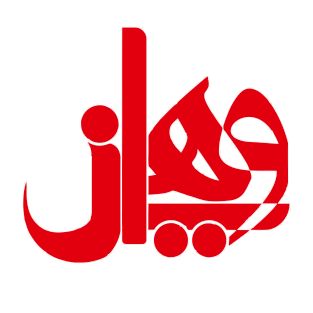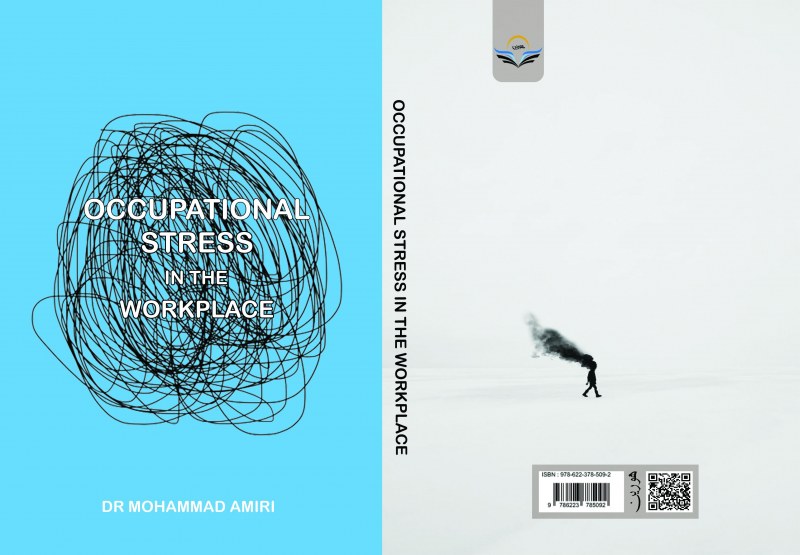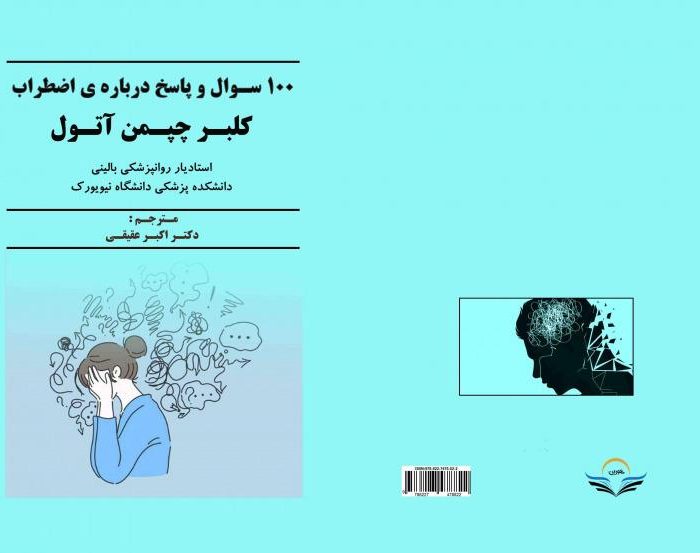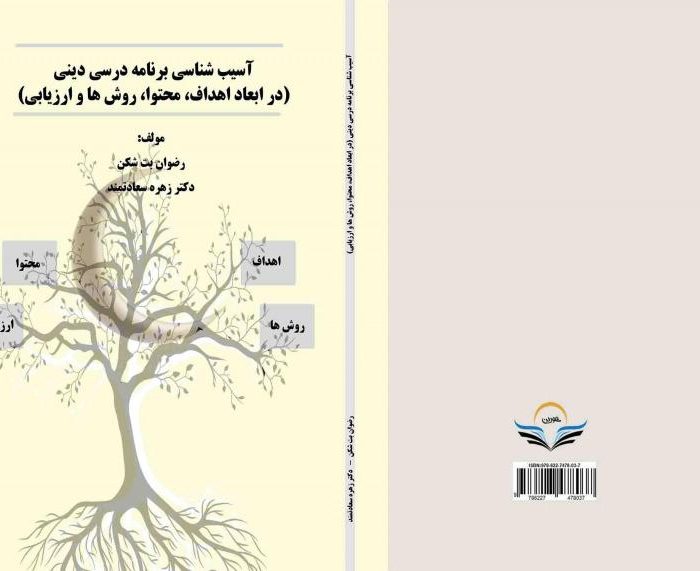کتاب OCCUPATIONAL STRESS IN THE WORKPLACE
- صفحه نخست
- رشته ها
- علوم انسانی
- روانشناسی
- کتاب OCCUPATIONAL STRESS IN THE WORKPLACE
کتاب OCCUPATIONAL STRESS IN THE WORKPLACE
۳۹۳,۰۰۰ تومان Original price was: ۳۹۳,۰۰۰ تومان.۱۹۶,۵۰۰ تومانCurrent price is: ۱۹۶,۵۰۰ تومان.
| تعداد صفحات | 131 |
|---|---|
| شابک | 978-622-378-509-2 |
| انتشارات |

کتاب OCCUPATIONAL STRESS IN THE WORKPLACE
درباره کتاب OCCUPATIONAL STRESS IN THE WORKPLACE
کتاب OCCUPATIONAL STRESS IN THE WORKPLACE اثری جامع و علمی است که به بررسی استرس شغلی و تأثیرات آن بر عملکرد کارکنان و محیطهای کاری میپردازد. این کتاب با استفاده از پژوهشهای بینالمللی و مطالعات موردی، ابعاد مختلف استرس شغلی را تحلیل کرده و راهکارهایی عملی برای مدیریت و کاهش این چالش ارائه میدهد.
موضوعات کلیدی کتاب
- عوامل ایجاد استرس شغلی: شناسایی عوامل محیطی، سازمانی و فردی که موجب بروز استرس در محیط کار میشوند.
- پیامدهای استرس شغلی: بررسی اثرات استرس بر سلامت جسمی، روانی و عملکرد حرفهای کارکنان.
- استراتژیهای مدیریت استرس: تکنیکهای عملی و اثباتشده برای کنترل و کاهش استرس شغلی.
- رهبری و استرس سازمانی: نقش مدیران در ایجاد محیط کاری سالم و کاهش تنشهای سازمانی.
- سلامت و بهرهوری سازمان: ارتباط میان کاهش استرس و افزایش بهرهوری کارکنان.
ویژگیهای برجسته کتاب
- نگارش مبتنی بر تحقیقات: استفاده از دادههای معتبر علمی و تحقیقات بهروز در زمینه استرس شغلی.
- رویکرد کاربردی: ارائه راهکارهای قابل اجرا برای مدیران، کارکنان و متخصصان منابع انسانی.
- تمرکز بر پیشگیری: پیشنهاد استراتژیهای پیشگیرانه برای کاهش عوامل استرسزا در محیط کار.
- جامعیت موضوعی: پوشش تمامی جنبههای مرتبط با استرس شغلی، از علل تا مدیریت و پیامدها.
چرا کتاب OCCUPATIONAL STRESS IN THE WORKPLACE را بخوانیم؟
این کتاب منبعی ارزشمند برای مدیران و کارکنان است که میخواهند محیط کاری بهتری ایجاد کنند و با چالشهای استرس شغلی بهتر مقابله نمایند. همچنین، برای پژوهشگران و دانشجویان حوزه مدیریت و روانشناسی سازمانی، این اثر یک منبع علمی و عملیاتی محسوب میشود.
مخاطبان کتاب
- مدیران و رهبران سازمانها
- متخصصان منابع انسانی و روانشناسی سازمانی
- کارکنانی که با استرس شغلی مواجه هستند
- دانشجویان و پژوهشگران حوزه مدیریت و روانشناسی
سفارش کتاب OCCUPATIONAL STRESS IN THE WORKPLACE
برای تهیه کتاب OCCUPATIONAL STRESS IN THE WORKPLACE و آشنایی با راهکارهای نوین مدیریت استرس شغلی، به بخش فروشگاه سایت مراجعه کنید یا با ما تماس بگیرید. این کتاب راهنمایی کاربردی برای ارتقای سلامت و بهرهوری در محیط کار خواهد بود.
پرسش و پاسخ برای کتاب “Occupational Stress in the Workplace”
فصل 1: مقدمه
1️⃣ مفهوم استرس چیست؟
⚖️ پاسخ: استرس به واکنشهای روانی و جسمی اشاره دارد که فرد در مواجهه با چالشها یا فشارهای محیطی تجربه میکند. این پاسخها میتوانند مثبت یا منفی باشند و بر سلامت عمومی فرد تأثیر بگذارند.
2️⃣ انواع استرس چیست؟
🧠 پاسخ: استرس میتواند به دو نوع تقسیم شود:
- استرس مثبت (یوتی استرس): استرسی که انگیزه ایجاد میکند و به فرد کمک میکند تا عملکرد بهتری داشته باشد.
- استرس منفی (دیسترس): استرسی که باعث اضطراب، فشار و کاهش عملکرد فرد میشود.
3️⃣ استرس شغلی چیست؟
🏢 پاسخ: استرس شغلی به فشارهای روانی ناشی از شرایط کاری و محیط کار اطلاق میشود. این نوع استرس میتواند از کار زیاد، روابط کاری مشکلدار یا مسئولیتهای زیاد ناشی شود.
4️⃣ مدیریت استرس چه مفهومی دارد؟
🧘♀️ پاسخ: مدیریت استرس به فرآیند شناسایی و کاهش عوامل استرسزا و استفاده از تکنیکها و استراتژیهایی برای کنترل واکنشهای استرسزا اطلاق میشود.
5️⃣ استراتژیهای مدیریت استرس چیست؟
💡 پاسخ: استراتژیهای مختلفی برای مدیریت استرس وجود دارد که شامل روشهای تغییر رفتار، تغییر محیط کار، تکنیکهای ذهنی و فیزیکی، و ارتقاء مهارتهای مقابلهای هستند.
فصل 2: سطوح و انواع استرس شغلی
6️⃣ چه عواملی باعث ایجاد استرس شغلی میشوند؟
🔍 پاسخ: عواملی چون حجم زیاد کار، عدم حمایت اجتماعی، شرایط کاری نامساعد، تغییرات سازمانی و فشارهای زمانی میتوانند باعث استرس شغلی شوند.
7️⃣ چگونه استرس شغلی را میتوان اندازهگیری کرد؟
📊 پاسخ: اندازهگیری استرس شغلی از طریق پرسشنامهها، مصاحبهها و ارزیابیهای روانشناختی انجام میشود. ابزارهایی مانند مقیاسهای استرس شغلی برای سنجش این موضوع استفاده میشوند.
فصل 3: علل اصلی استرس شغلی
8️⃣ علل اصلی استرس شغلی چیست؟
⚠️ پاسخ: عواملی همچون فشار شغلی، عدم تعادل بین کار و زندگی، فقدان امنیت شغلی، سوء مدیریت، و شرایط محیطی نامناسب میتوانند به استرس شغلی منجر شوند.
فصل 4: استرس شغلی و عملکرد کاری
9️⃣ چگونه استرس شغلی بر عملکرد سازمان تأثیر میگذارد؟
📉 پاسخ: استرس شغلی میتواند موجب کاهش بهرهوری، افزایش غیبتها، مشکلات سلامت روان و جسمی، و ایجاد تعارضهای بین فردی در سازمان شود که در نهایت عملکرد کل سازمان را کاهش میدهد.
🔟 چه عواملی باعث ایجاد مشکل در محل کار میشوند؟
💼 پاسخ: عواملی چون عدم وضوح نقشها، فشارهای شغلی زیاد، نبود تعادل در کار و زندگی و عدم پشتیبانی از کارکنان میتوانند مشکلات زیادی در محل کار ایجاد کنند.
فصل 5: استراتژیهای مدیریت استرس شغلی
1️⃣1️⃣ مدیریت استرس شغلی در سطح سازمانی چگونه است؟
🏢 پاسخ: مدیریت استرس در سطح سازمانی شامل بهبود محیط کار، افزایش حمایتهای اجتماعی، آموزش مهارتهای مقابلهای به کارکنان و تغییرات سازمانی برای کاهش استرس است.
1️⃣2️⃣ چگونه فرد میتواند استرس شغلی خود را مدیریت کند؟
🧘♂️ پاسخ: افراد میتوانند با استفاده از تکنیکهای آرامسازی، مدیریت زمان، تعیین مرزهای شغلی مناسب، و حمایت اجتماعی به مدیریت استرس خود کمک کنند.
1️⃣3️⃣ استراتژیهای مقابلهای برای جلوگیری از استرس شغلی چیست؟
🛠️ پاسخ: استراتژیهایی مانند یادگیری تکنیکهای کاهش استرس، تفکر مثبت، تمرینات بدنی و توجه به سلامت روان میتوانند به کاهش و پیشگیری از استرس شغلی کمک کنند.
1️⃣4️⃣ چه پیشنهادات و توصیههایی برای مدیریت استرس شغلی وجود دارد؟
📚 پاسخ: توصیهها شامل ارتقاء ارتباطات در سازمان، توسعه برنامههای آموزشی برای مقابله با استرس، ایجاد فرصتهای استراحت برای کارکنان، و توجه به مسائل روانی و جسمی آنها است.
این پرسشها و پاسخها مفاهیم و استراتژیهای کلیدی کتاب “Occupational Stress in the Workplace” را پوشش میدهند و میتوانند به مدیران و کارکنان در شناسایی و مدیریت استرس شغلی کمک کنند.
| تعداد صفحات | 131 |
|---|---|
| شابک | 978-622-378-509-2 |
| انتشارات |
محصولات مشابه
-
کتاب 100 سوال و پاسـخ دربارهی اضـطراب
۷۲۰,۰۰۰ تومانOriginal price was: ۷۲۰,۰۰۰ تومان.۳۲۴,۰۰۰ تومانCurrent price is: ۳۲۴,۰۰۰ تومان. -
کتاب ارتباط مدیریت تعارض با فرا شناخت و پردازش هیجانی
۳۰۳,۰۰۰ تومانOriginal price was: ۳۰۳,۰۰۰ تومان.۱۷۷,۲۵۵ تومانCurrent price is: ۱۷۷,۲۵۵ تومان. -
کتاب آسیب شناسی برنامه درسی دینی (در ابعاد اهداف، محتوا، روش ها و ارزیابی)
۳۱۹,۲۸۶ تومانOriginal price was: ۳۱۹,۲۸۶ تومان.۱۸۶,۷۸۲ تومانCurrent price is: ۱۸۶,۷۸۲ تومان. -
کتاب استرس شغلی و ترک کار کارکنان
۳۶۰,۰۰۰ تومانOriginal price was: ۳۶۰,۰۰۰ تومان.۱۹۸,۰۰۰ تومانCurrent price is: ۱۹۸,۰۰۰ تومان.












